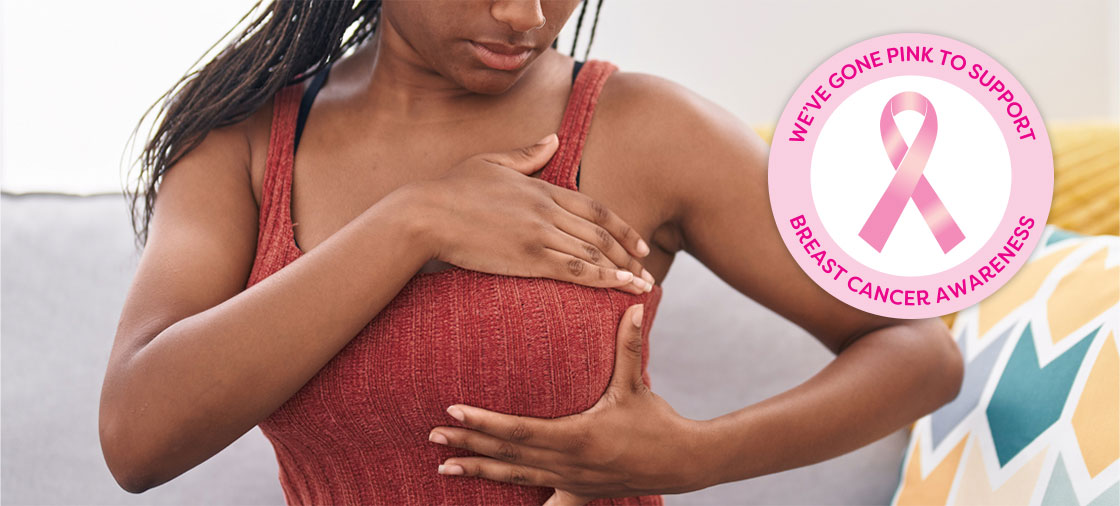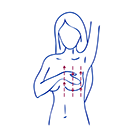HOW TO DO A SELF EXAMINATION


-
- Stand in front of the mirror and look at your breasts. Lift your arms above your head as though trying to reach the ceiling and look at your breasts in a stretched position.
- Check to see that there are no obvious changes between the two sides: no nipple changes or visible lumps.
- Now feel your breasts. Use the flat surface of your fingers.
- Always keep your hand flat on your breast.
- Apply cream, shower gel, soap or oil to your breasts before starting to feel. This will help your hand glide easily over your skin and make it easier to feel for any lumps.
- Put one hand behind your head. The free hand will check the opposite breast.
- Start feeling in the armpit.
- Now move in the figure of a six and around the entire breast, until you reach the nipple.
- Now go back to the armpit, moving from top to bottom of the breast, covering the whole area once again.
- Last one now, move from the armpit in a side-to-side direction, again covering the whole breast.
- The breast starts from the collar bone, down to your abdomina wall and from your breast bone to mid-way through your side.
- Check for any nipple discharge oozing from the nipples
- The only time there should be something coming out of the nipple is when you are breastfeeding. If the fluid is yellow or green it shows infection. If it is clear or blood-stained go straight to the doctor for a check-up.

WHAT TO LOOK FOR
- A lump in the breast or armpit, sizes vary from a marble to a tennis ball;
- Increase in size of one breast;
- Swelling of glands in armpit;
- Enlargement of one arm;
- Dimpling of the skin;
- Dimpling of or changes to the nipple;
- Discharge from the nipple;
- Lowering of one breast or nipple;
- Orange peel´ appearance on the skin of the breast and/or nipple;
- Retraction of one or both nipples;
- Dry skin (eczema) of the nipple
Source: www.pinkdrive.org



